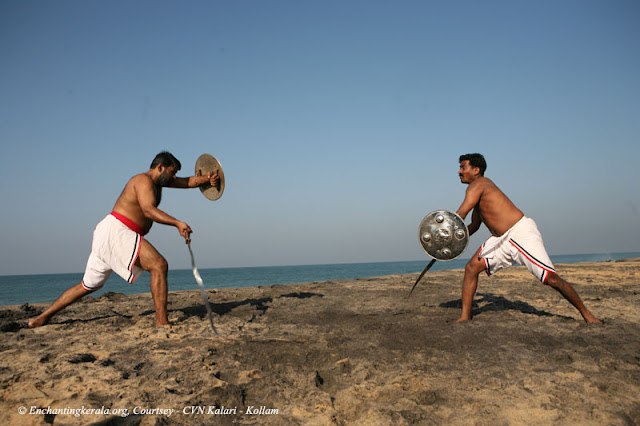Kalaripayattu
Though no more used exactly as in the past, the relevance of martial arts will continue as ever before. The techniques of martial arts prove to be very effective in close quarter empty hand fighting in the battlefield and for police and law enforcing authorities. (Just look at the unarmed combat principles and techniques of the world's elite forces). For the common man these arts provide an exhilarating method of keeping himself fit and at the same time offering him some way of defending himself against an aggressor. The philosophy behind the oriental martial arts is a study in itself.
Among the ancient martial traditions that exist today, that of Kerala, (a state in the southern most part of India) is named Kalarippayattu and it can be considered as the most ancient and comprehensive. The origin of Kalarippayattu can be traced back to the Vedic period. Legends say that around 525 AD an Indian Buddhist monk named Bodhidharama traveled to China and preached at the Shaolin temple.
On finding the monks weak and listless, Bodhidharama taught them the eighteen hands of Buddha - a special set of exercises and from this evolved the Chinese art of Shaolin Boxing. These eighteen hands of Buddha were said to be derived from the eighteen adavukal (adavu = technique), which form the base of the Vadakkan or northern style of Kalarippayattu. Slowly this fighting system spread to Japan and along with the fighting traditions already present in those regions, developed into many of today's martial arts. That is another story.
Kalarippayattu is as old as the great Indian philosophy and the Vedas. It is the martial tradition of Kerala and it has its roots deep in the Vedic culture of India.





No comments:
Post a Comment